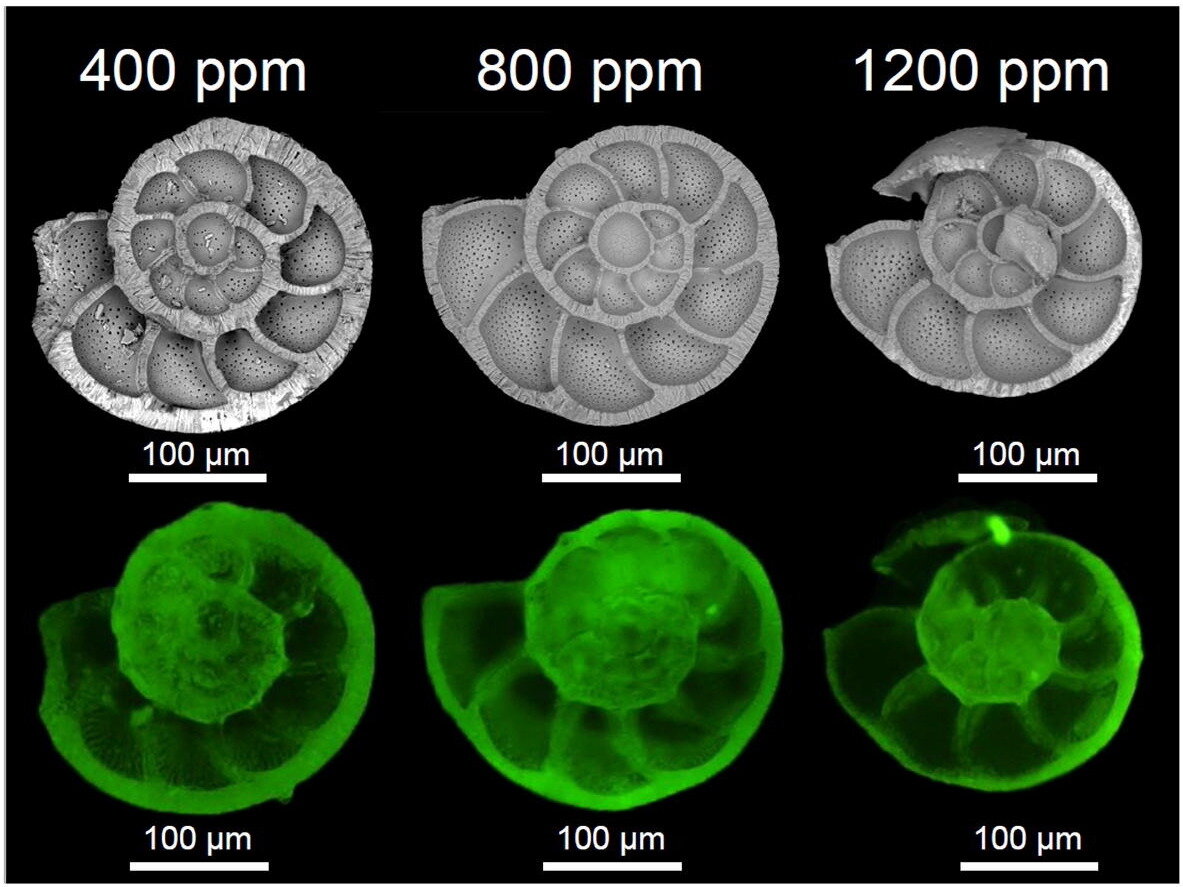Oceanic responses to climate and human interactions have been studied for decades. In recent years, the effects of increasing ocean acidity have been featured, with stark images of coral reefs being decimated by bleaching.
Acidification results from ocean-atmosphere interactions, whereby carbon dioxide from the atmosphere is drawn down, reacting with water molecules to form carbonic acid. This then further breaks down into hydrogen ions and bicarbonate ions, with the former causing a reduction in pH.
Corals are not the only marine organisms to be made up of calcium carbonate and therefore susceptible to ocean acidification, however. Single-celled organisms known as foraminifera produce chambered shells of calcium carbonate, and they are an important part of marine food chains, being primary and secondary consumers. Most tend to be benthic, where they live in or at the seafloor, but a smaller proportion are planktonic, living within the water column.
New research, published in Geoscience Frontiers, has focused on the impact of acidification on benthic foraminifera living on the continental shelf of the West Pacific Ocean. Researchers at the Institute of Oceanology in the Chinese Academy of Sciences conducted experiments for eight months on foraminifera cultures taken from four sites in the Yellow Sea, involving 4,626 specimens attributed to 39 species. They tested foraminifera response to marine conditions when progressively more carbon dioxide (400ppm, 800ppm, 1200ppm, and 1600ppm) was fed into the system. This reflects modeling scenarios reported by the Intergovernmental Panel on Climate Change (IPCC) where worse-case scenario simulations are based upon carbon dioxide concentrations of 1,600 ppm and above.
From the experiments, the scientists found that there was an overall decrease in benthic foraminifera abundance in response to increasing acidity, while shell diameter and thickness (and therefore weight) also reduced as there was less calcium carbonate in the ambient environment from which to build their shells. This reduction in weight and size (dwarfism) is attributed to the foraminifera attempting to preserve the energetic costs of obtaining calcium carbonate from an ever-smaller reserve in the surrounding water.
2023-07-13 22:48:02
Original from phys.org
